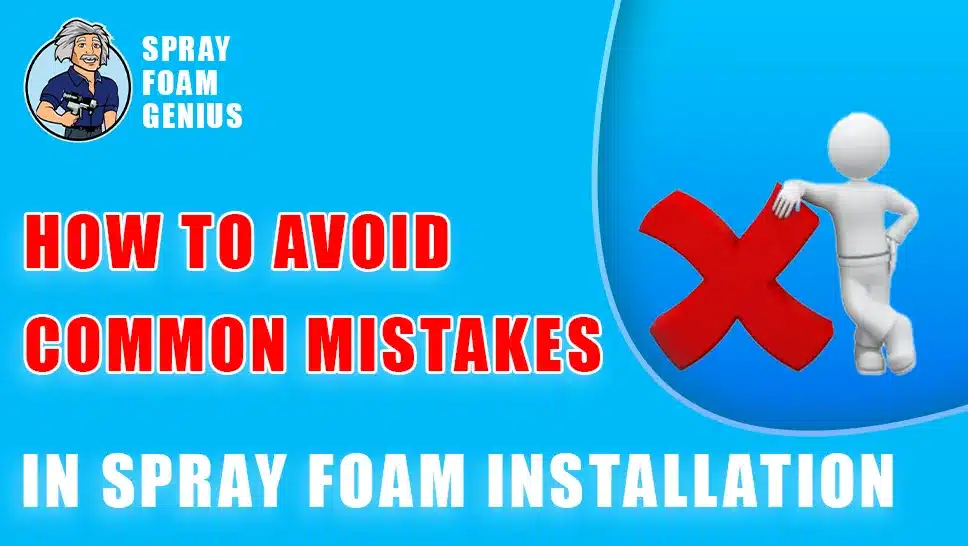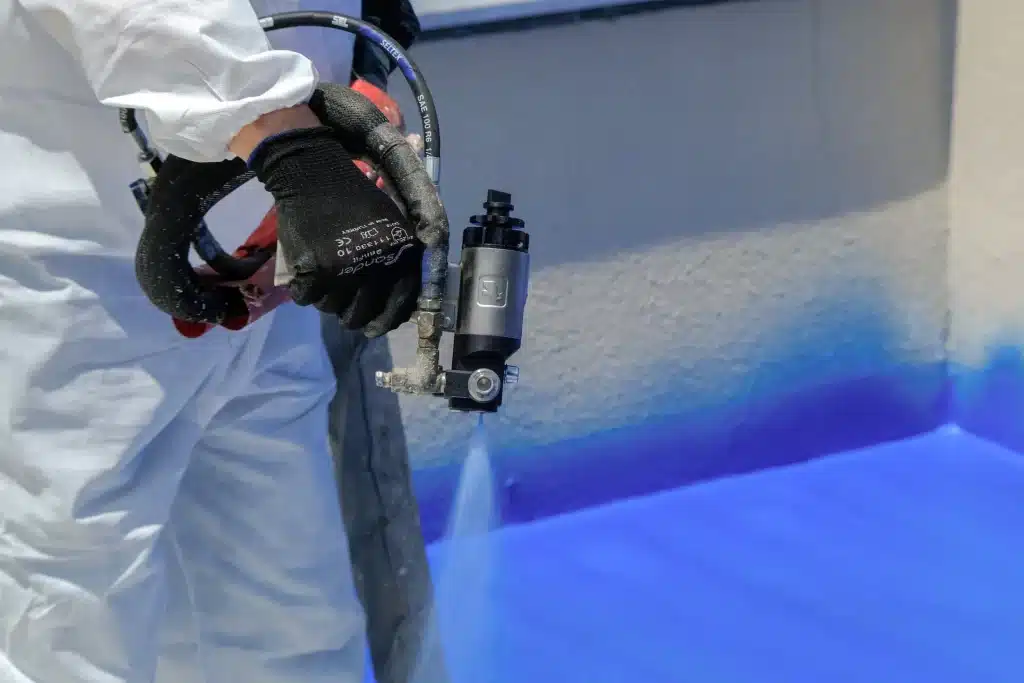
Spray foam insulation is a critical component in modern construction and renovation projects, offering superior thermal performance, air sealing, and energy efficiency. However, achieving these benefits requires proper installation, which can be challenging and fraught with potential pitfalls. As a spray foam contractor, your reputation and success depend on delivering top-quality results while avoiding common mistakes that could lead to costly problems down the line. In this guide, we’ll delve into the most common errors during spray foam insulation installation and how you can avoid them, ensuring that every project you undertake is a success.
Understanding the Importance of Proper Spray Foam Insulation Installation
Proper installation of spray foam insulation is essential to maximizing its benefits, which include:
- Energy Efficiency: When installed correctly, spray foam insulation provides a seamless barrier that reduces energy loss, lowering heating and cooling costs.
- Air Sealing: Spray foam can seal gaps and cracks, preventing air leakage and improving indoor air quality.
- Moisture Control: It acts as a vapor barrier, reducing the risk of mold and mildew growth.
- Structural Support: Spray foam adds rigidity to walls, increasing structural integrity.
Given these benefits, it’s crucial to avoid common mistakes that can compromise the performance of the insulation and, ultimately, your business reputation.
Common Spray Foam Insulation Installation Mistakes and How to Avoid Them

1. Inadequate Surface Preparation
One of the most common mistakes in spray foam insulation installation is failing to properly prepare the surface. Spray foam adheres best to clean, dry surfaces. Dust, dirt, moisture, or oil can prevent the foam from adhering correctly, leading to weak spots and potential air leaks.
How to Avoid This Mistake:
- Clean the Surface: Before applying the foam, thoroughly clean the surface to remove dust, dirt, and debris.
- Ensure Dryness: Make sure the surface is dry. If you’re working in a high-humidity area or after rain, allow sufficient time for the surface to dry completely.
- Check for Oil or Grease: Use a degreaser if necessary to remove any oils that might prevent proper adhesion.
2. Improper Foam Thickness
Applying the incorrect thickness of spray foam can result in poor insulation performance. Too little foam won’t provide adequate thermal resistance, while too much can cause structural issues or even create a fire hazard.
How to Avoid This Mistake:
- Follow Manufacturer Guidelines: Always adhere to the manufacturer’s recommendations for foam thickness. Each product has specific guidelines that must be followed to achieve optimal results.
- Use Multiple Passes: For areas requiring thicker insulation, apply the foam in multiple passes. This approach allows the foam to cure properly between layers and prevents overheating, which can lead to cracking or other issues.
- Monitor Application: Regularly check the thickness during application using a depth gauge to ensure consistency across the entire surface.
3. Ignoring Ventilation Requirements
Spray foam installation generates fumes that can be hazardous if not properly ventilated. Failing to ensure adequate ventilation can lead to health risks for installers and occupants and affect the curing process of the foam.
How to Avoid This Mistake:
- Use Ventilation Equipment: Invest in proper ventilation equipment, such as exhaust fans or ventilation systems, to remove fumes from the work area.
- Follow Safety Protocols: Ensure that all workers are equipped with appropriate personal protective equipment (PPE), including respirators, to minimize exposure to harmful chemicals.
- Plan for Occupant Safety: If the installation occurs in an occupied building, schedule the work when the area can be vacated, or ensure that affected zones are sealed off and adequately ventilated.
4. Incorrect Mixing of Foam Components
Spray foam insulation is created by mixing two components—an isocyanate and a polyol resin. Incorrect mixing ratios can lead to foam that is too soft, brittle or fails to expand properly, compromising the insulation’s effectiveness.
How to Avoid This Mistake:
- Calibrate Equipment Regularly: Ensure that your spray equipment is properly calibrated to deliver the correct ratio of components. Regular maintenance and calibration are essential to consistent performance.
- Conduct Test Sprays: Before starting the actual installation, perform test sprays to verify that the foam is expanding and curing as expected.
- Monitor Conditions: Pay attention to environmental conditions, such as temperature and humidity, as these can affect the chemical reaction and the quality of the foam.
5. Applying Spray Foam in Extreme Temperatures
Temperature plays a significant role in the application and performance of spray foam insulation. Applying foam in temperatures that are too high or too low can lead to poor adhesion, uneven expansion, and suboptimal insulation properties.
How to Avoid This Mistake:
- Check Weather Conditions: Monitor the weather and schedule installations for days when temperatures are within the recommended range for your specific spray foam product.
- Condition the Materials: Store foam components in a temperature-controlled environment to ensure they are at the proper temperature when mixed and applied.
- Use Heaters or Coolers: In extreme conditions, consider using portable heaters or coolers to maintain the application area within the ideal temperature range.
6. Neglecting to Protect Adjacent Surfaces
During installation, it’s easy for spray foam to overspray onto adjacent surfaces, leading to unintended damage or the need for extensive cleanup. Overspray can also cause aesthetic issues, particularly in finished areas.
How to Avoid This Mistake:
- Use Protective Coverings: Before starting the application, cover adjacent surfaces, such as windows, doors, and finished walls, with plastic sheeting or other protective materials.
- Implement Barriers: Set up barriers or shields around the work area to contain the spray foam and prevent it from spreading to unintended areas.
- Be Mindful of Spray Techniques: Train your team to use controlled, consistent spray techniques that minimize overspray and ensure that the foam is applied only where needed.
7. Failing to Inspect for Quality Assurance
After completing the spray foam installation, it’s essential to conduct a thorough inspection to ensure that the work meets quality standards. Failing to do so can result in missed issues that could lead to callbacks, additional costs, and dissatisfied customers.
How to Avoid This Mistake:
- Conduct a Visual Inspection: Carefully inspect the entire installation area for uniformity, coverage, and proper adhesion. Look for gaps, cracks, or uneven surfaces that may require touch-ups.
- Perform Thermal Imaging: Use thermal imaging cameras to detect areas where the insulation may be insufficient or where air leaks might be present.
- Document the Work: Take photos and notes during the inspection to document the quality of the installation. This documentation can be valuable for your records and in case of any future disputes.
8. Overlooking the Importance of Training and Certification
Spray foam insulation is a specialized field that requires proper training and certification to perform effectively. Attempting to cut corners by hiring untrained workers can lead to mistakes that jeopardize the entire project.
How to Avoid This Mistake:
- Invest in Training: Ensure that all team members involved in the installation process are properly trained and certified. This includes not only the application of the foam but also safety protocols and equipment maintenance.
- Stay Updated: Keep your training up-to-date with the latest industry standards and best practices. Consider ongoing education opportunities to enhance your team’s skills and knowledge.
- Partner with Certified Professionals: If you’re outsourcing any part of the project, work only with certified professionals who have a proven track record of quality work in spray foam insulation.
Maximize Your Success with Professional Marketing Support
Avoiding these common spray foam insulation installation mistakes is critical to your business’s success. By focusing on proper surface preparation, correct foam thickness, adequate ventilation, accurate mixing, and ongoing training, you can ensure that every project meets the highest standards of quality and customer satisfaction.
At Spray Foam Genius Marketing, we understand the challenges that spray foam contractors face in delivering top-notch services while growing their businesses. That’s why we specialize in providing marketing solutions tailored specifically for the spray foam industry. Whether you need help with SEO, lead generation, or reputation management, our team is here to support you.
Ready to take your spray foam business to the next level? Contact us today at 877-840-FOAM for USA and 844-741-FOAM for Canada visit our website at sprayfoamgeniusmarketing.com, or email us at [email protected].
Let’s work together to build your brand, attract more customers, and ensure your success in the spray foam industry.
- Social Media Marketing for Spray Foam Businesses: What Works in 2025? - February 6, 2025
- Best SEO Strategies for Spray Foam Insulation Contractors to Rank #1 on Google - February 6, 2025
- What is Spray Foam Insulation? Benefits and Applications - February 5, 2025

